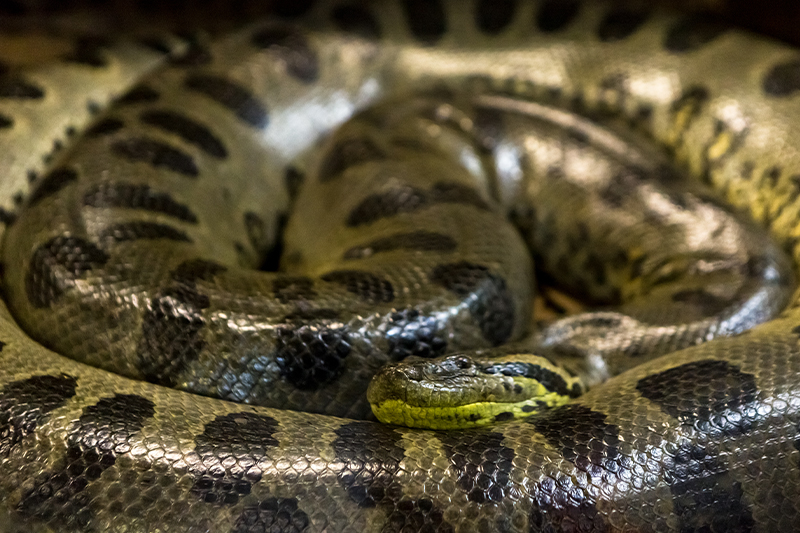Green Anaconda
Contrary to popular myth and what Hollywood claims, there are no records of anacondas eating people.
Day of Creation: six
Biblical Kind: true boa (includes all true boa species)
Status: least concern
Length: 10 (males)–20 (females) feet (verified)
Weight: up to 200 pounds (verified)
Habitat: shallow, slow-moving freshwater habitats of northern South America and Trinidad
Lifespan: 25–35 years
Diet: any prey they can swallow
Family Life: solitary
Reproduction: an average of 20–40 young are born after 6–7-month gestations
Fun Facts
- While they are doubtless the largest snakes in the world, much debate exists about the maximal size of green anacondas. Because the largest ones live in the most remote locations and snakeskins can stretch to double their size, claims about giant snakes 20–40 feet long are often unsubstantiated by the scientific community. Pittsburgh Zoo had a female that measured 20' 7" and weighed 200 pounds at her death. The largest anaconda measured by a scientist who studied over 1,000 specimens measured 17' 1" and weighed 215 pounds. A construction site in Brazil filmed one that measured 33' 3" and weighed 880 pounds, but it was not verified in scientific literature.
- While slow on land, they are fast in the water and spend much of their time submerged with only their nostrils and eyes exposed.
- They can eat prey up to 50% of their size and may go months without eating after a large meal. Known prey items include caimans, capybaras, deer, jaguars, and peccaries.
- Females are known for cannibalizing males after mating, likely as a head start for growing young. Females are also capable of parthenogenesis, or cloning themselves.
- In 2024, green anacondas were officially split into a larger northern rainforest-dwelling (species akiyama) and a smaller grassland-dwelling southern species. Rainforest dwellers have access to more consistent prey, which is why they are larger. Anacondas in the south survive dry seasons by burrowing in mud.

